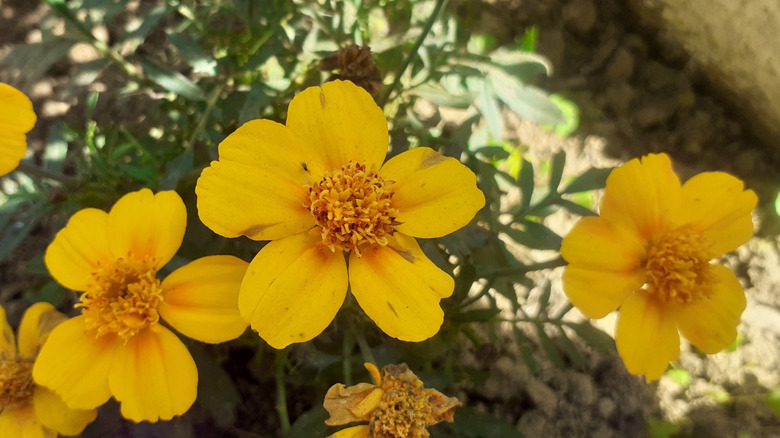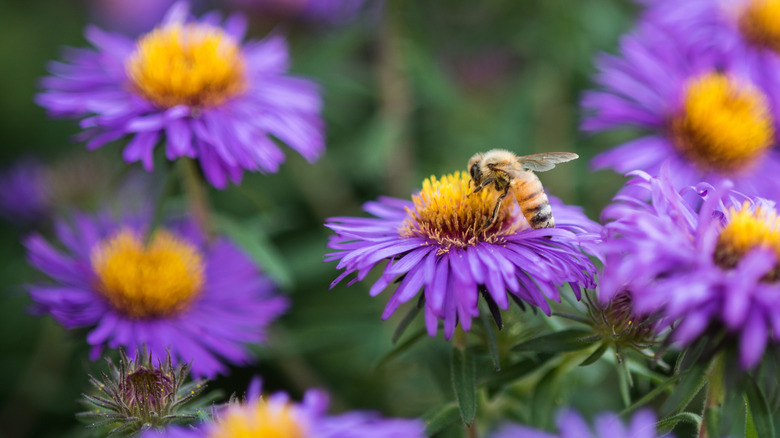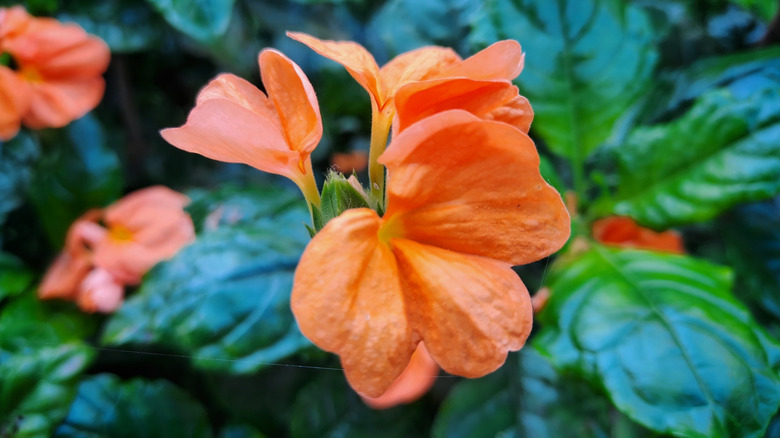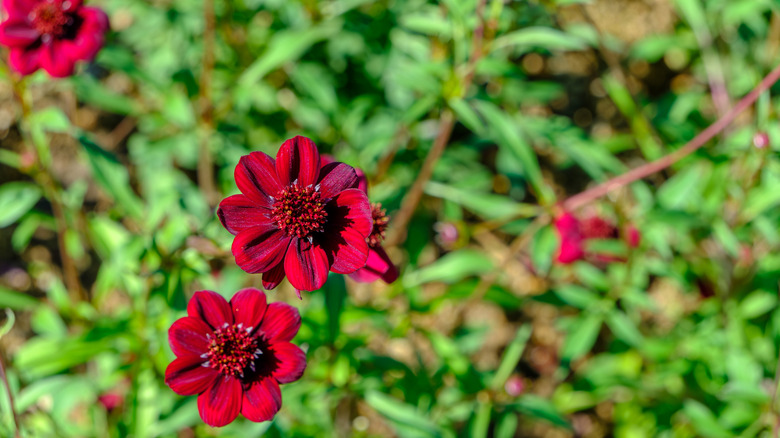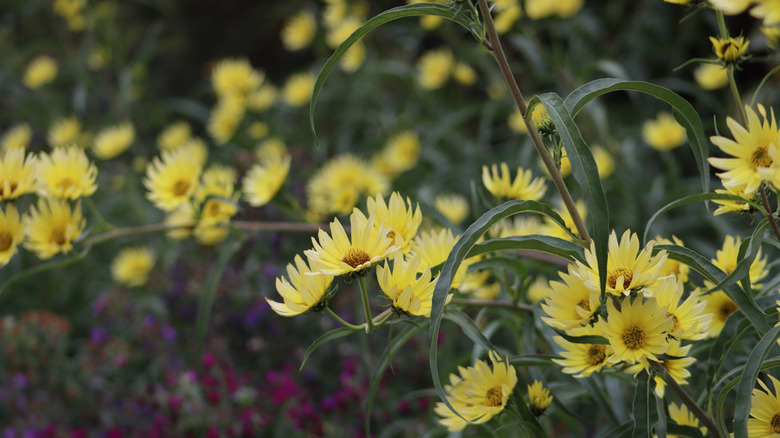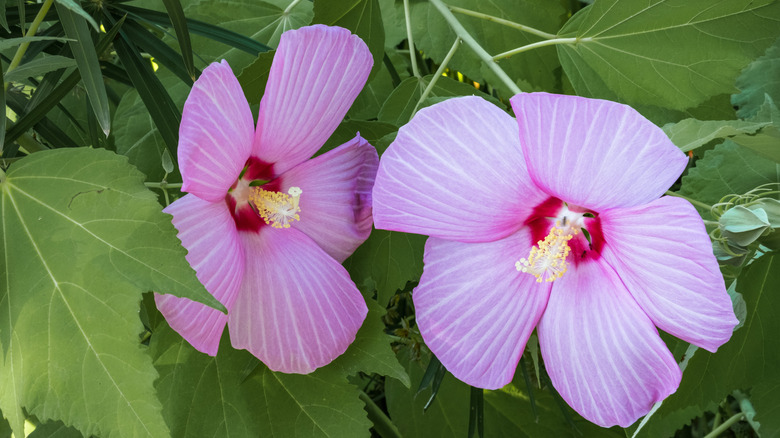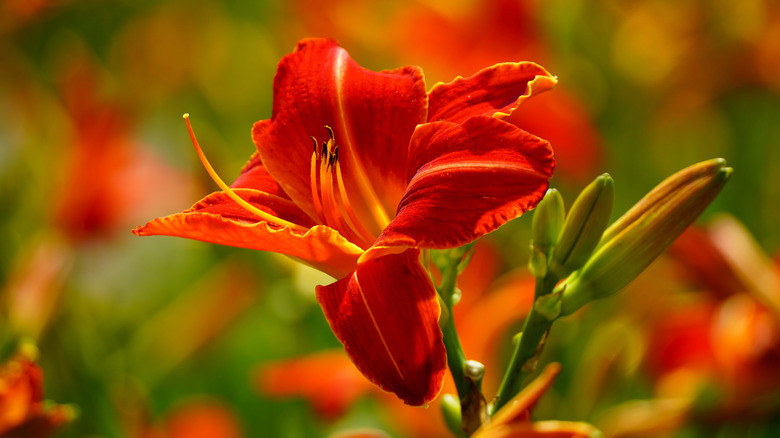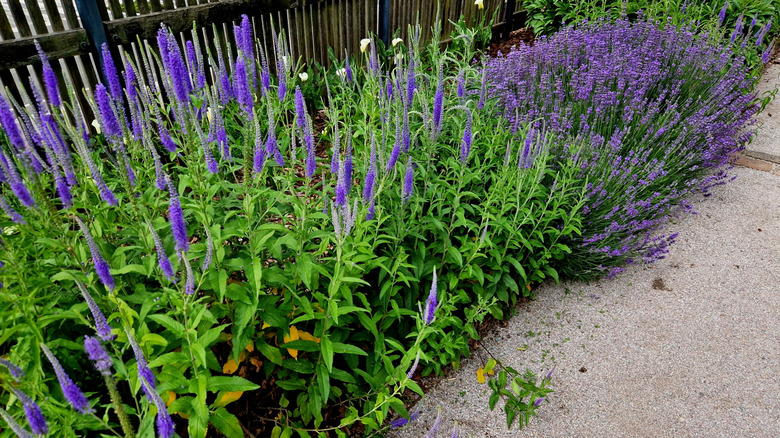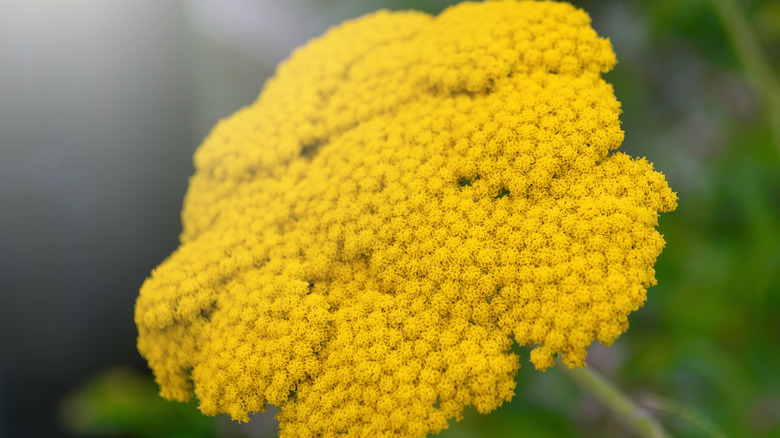9 Heat Tolerant Perennials That Can Handle The Hottest Summer Days
For gardeners, the summer heat is not only ruthless, but it can also be a bit soul-crushing. When your garden starts to yellow, shrivel, and appear severely sunburned, it's easy to just want to give up and say you'll try again next fall. However, we have some good news for you: Not all flowering plants succumb to the summer heat. There are definitely some perennials that won't throw in the towel on you, and even better, some will thrive in the heat and soak up everything the sun has to offer. So, instead of giving up, you may just want to reconsider what you plan on growing in your garden bed.
Believe it or not, there are so many heat-tolerant perennials that it may surprise you. And many of them don't just tolerate the heat, they prosper in it. Some of these heat-tolerant blossoms are also tough enough to withstand the driest summer days, and with just enough care, they'll flourish and make your garden the showstopper in the neighborhood. Whether your zone is prone to drought or you simply want a garden that stays lush and colorful throughout summer, these heat-tolerant perennials are the toughest flowering plants that can handle the hottest summer days.
Mexican tarragons
Although most marigolds are annuals, there are a few that can be heat-loving perennials, like the Tagetes lucida, also known as Mexican mint marigold or Mexican tarragon. This beautiful flower grows in small clusters and blooms from summer into fall, and is native to Mexico and other areas of Central America. They're low maintenance and can even be used in food and to make tea. These bright golden gems thrive in six or more hours of full sun each day and in well-draining clay, silt, or sandy soil. Their hardy zones are 8a through 11b.
Aster
Hardy in zones 4a through 8b, asters are late-summer bloomers that hold up beautifully during the hottest summer days. These perennials will remind people of daisies, and their petals come in all kinds of colors from white to the deepest reds and hazy purples. They thrive in getting full sun for most of the day, but also have no issue sitting in partial shade for a couple of hours. Caring for asters shouldn't be too difficult, but you might consider pruning them as they can benefit from an early summer pruning to encourage fuller growth.
Firecracker flower
The Crossandra infundibuliformis, commonly known as the firecracker flower, is a red beauty that is sure to bring hummingbirds to your yard. Although a highly heat-tolerant flower that thrives in warm, humid climates, it does prefer partial shade to protect its green and glossy leaves. They still need at least 6 hours of sunlight every day. Hardy in zones 10a through 11b, they should be in consistently moist, well-draining soil to maintain their vibrant green leaves. In full bloom, these delights will add a burst of color to your garden and blend amazingly well with other perennials.
Chocolate cosmos
If you're looking for a stress-free and heat-tolerant flower that will bring velvety blooms to your garden, then you're going to want to plant Cosmos astrosanguineus, also called chocolate cosmos. Another flower native to Mexico, gardeners who have planted them rave about their scrumptious scent, as they actually smell like cocoa. These chocolatey perennials not only thrive in direct sunlight, but their distinct smell is most potent on the warmest days of the summer. A quick tip, the cosmos varieties are flowering plants you should deadhead for a fuller bloom. They are hardy in zones 9 through 11.
Maximilian sunflower
Sunflowers might be one of the most iconic flowering plants of the summer, as even people unfamiliar with flowers can recognize them. But if you want something unique, the Maximilian sunflower, or Helianthus maximiliani, is a perennial variety and is worth a spot in your garden. These delicate golden-yellow flowers are hardy in zones 4a through 9b, flourish under the sun, and are flowers that attract pollinators and are easily grown from seed. They are known for their drought tolerance, but will perform their best with twice-weekly deep watering sessions aimed at the base.
Rose mallow
The rose mallow, or the Hibiscus moscheutos, will have everyone wondering what those lush, tropical-looking blooms are. They can be found in a variety of colors from crisp white to a soft pink, and are sun-loving blossoms, hardy in zones 4a through 9b, that thrive in moist, well-drained soil. You'll want to offer them some relief from the peak afternoon sun and provide shade to help protect their delicate leaves from burning. Whether you plant one color variety or different colors, they'll give a splash of tropical elegance to any garden bed.
Daylilies
Hemerocallis is a trumpet-shaped flower that blooms for one day, which is how they got their name, "daylilies" (although they aren't actually lilies). These perennials bring splashes of color that liven up a garden bed and are heat-tolerant plants hardy in zones 3a to 9b. These can also be consumed and prepared in all kinds of ways. The biggest downside of these beautiful, colorful blossoms is that they're toxic to cats, so those who have cats in their homes will have to pass on planting these.
Speedwells
Although both plants blossom upright and sport hazy purple hues, let us start by saying these aren't lavenders, and the two are not even closely related. Speedwells, or Veronica spp., are perennials hardy in zones 3a to 8b that thrive in 6 or more hours of full sunlight. Once established, they're known to be low-maintenance and bloom from the earliest days of summer through the end of the season. Not only do they come in that similar hazy purple color of lavenders, they also come in a blue that rivals bluebonnets, and even white and pink.
Yarrow
Achillea millefolium, or yarrow, is a hardy perennial that loves the sun and bursts with life even in the toughest conditions. Humidity, drought, pollution, dry soil, you name it, and they can likely handle it. These tightly packed flowers bloom in clusters of up to 100 and mimic a delicately patterned lace. Throughout the summer, yarrows will blossom, and with proper deadheading, they can extend their flowering into the fall season. But they are toxic to dogs and cats, so you might have to skip them if you have pets. They are hardy in zones 3a to 9b.

